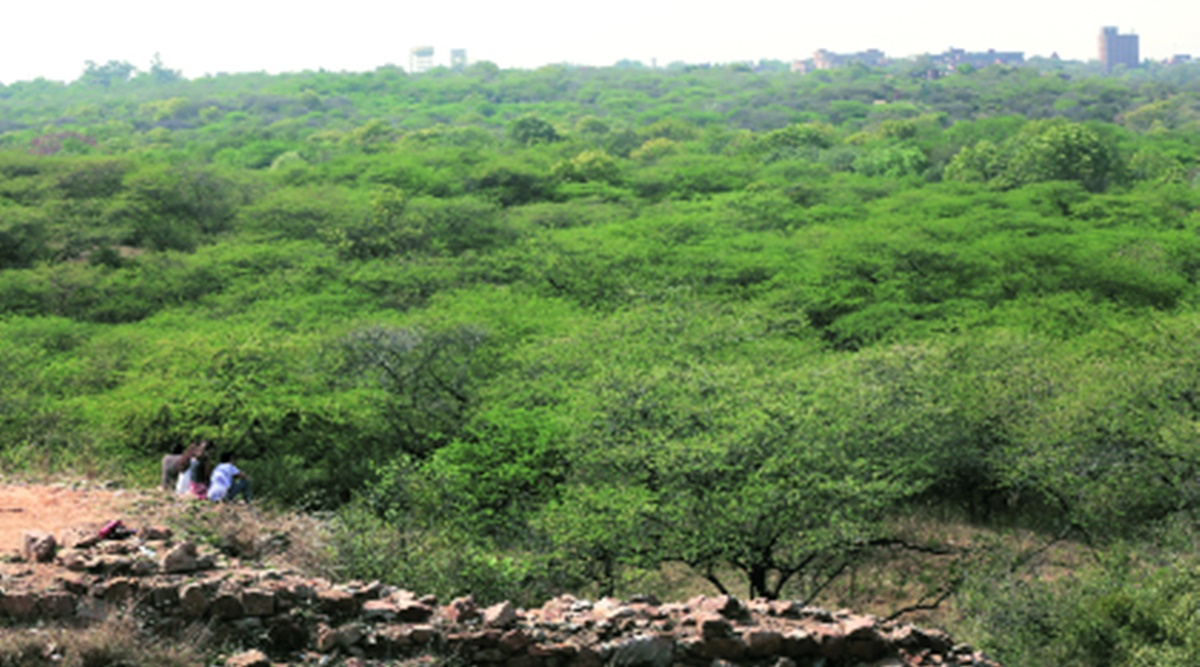 Over 400 hectares of the Central Ridge is to be restored.
Over 400 hectares of the Central Ridge is to be restored. Restoring over 400 hectares of the Central Ridge will have an “enormous” impact on Delhi’s air quality and groundwater levels, according to the expert heading the revival project.
Delhi University Professor C R Babu, who heads the Centre for Environmental Management of Degraded Ecosystems, told The Indian Express his team aims to begin restoration work this month. The ridge, a reserved forest of about 7,700 hectares and the northern extension of the Aravalli Range, is presently covered with Prosopis juliflora or vilayati kikar — an invasive tree species introduced under the British Empire, which is not exactly serving as the city’s “green lungs”, according to Prof. Babu.
“The leaves of the kikar tree are small and smooth. When dust laden air passes through it, nothing or almost negligible amount of it sticks. Replace that with full-grown forest having three-layer canopy, and broad-leaved trees, and shrubs — it acts as a barrier. The polluted air will pass through the bottom layer of the forest and move up, or vice versa, and that will sieve out fine particles in the air,” Babu said. In February, the Delhi cabinet cleared a plan for restoring 423 hectares of the Central Ridge over the next five years. Prof. Babu agrees it is a challenging task, but he aims to turn the area into a space where people can enjoy the biodiversity of the Aravallis, take butterfly and bird-watching safaris, and walk on nature trails and around water bodies in the heart of the city.
But first, the kikar has to be removed, as it does not let any other tree or shrubs survive around it. This is because the tree can dry up underground aquifers through its deep-root system, going as far as 20 metres or more in search of water, significantly higher than around 5 metres that native shrubs and trees go, as per Prof. Babu. The tree’s canopy is such that it does not let sunlight reach the ground, which also hinders growth of other species.
In the northern ridge, around Hindu Rao hospital, some of the kikar trees have started dying. “It may be as they are over 150 years old now, or that the groundwater levels have gown down very low for them to survive,” Prof. Babu said. Since the ridge is a notified reserved forest, the kikar cannot be removed completely. The plan therefore is to remove a few branches, which will help sunlight to break through and full-grown saplings can be planted in such places, he added.
In the first stage, a patch of the ridge measuring about 100 hectares along the Sardar Patel Marg will be restored and the remaining area will be taken afterwards. Prof. Babu estimates the residents will begin to see the impact of restoration on the environment over the next two years.
A variety of climbers and shrubs will be planted that will grow above the canopy of the kikar and block sunlight to it, causing it to slowly die over the next two years, Babu said.
Prosopis juliflora is native to Mexico, South America and the Caribbean, and it was planted in Delhi around the 1930s by the British due to its fast growth in arid or semi-arid areas.